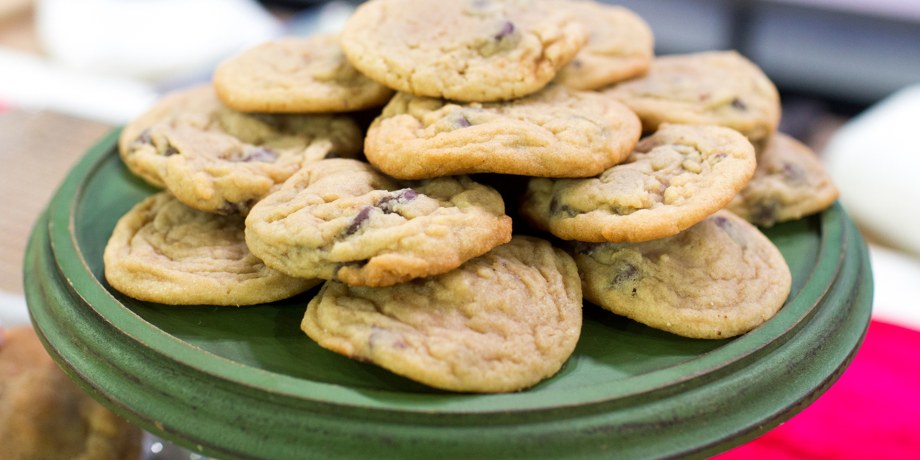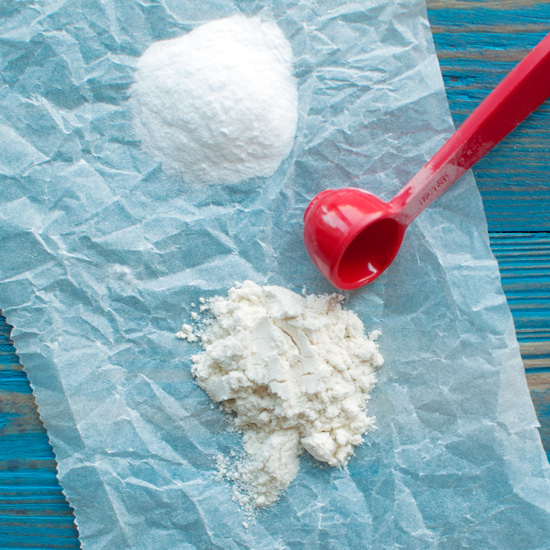
You’re going to make a classic chocolate chip cookie recipe that calls for baking powder. By doing so, your cookies may be flatter than those baked right away, but they will not be as flat as they would had you used baking soda.

You actually can even let your batter sit in the fridge and not be ruined.

Therefore, you don’t have to work quite as quickly. The second part of the reaction occurs when the batter is heated. That liquid allows the baking soda and dry acid to combine and produce carbon dioxide gas. Baking powder, however, often has a dual reaction. Because baking soda reacts quickly, you need to work with haste! If you don’t get your batter in the oven soon enough, the reaction will be over, and your baked goods may be flat. The last big difference between baking soda and baking powder is the reaction time. If there are no acids present in your recipe, the baking soda itself may not be enough to react. If a recipe calls for baking powder, but you use baking soda instead, disaster (okay, maybe just flat cookies) may ensue. You may be able to use baking powder in replacement for baking soda without disaster, but you will have to increase the amount, as stated above. Remember though, you can’t easily swap these two leavening agents.

A good rule of thumb is ¼ teaspoon baking soda = 1 teaspoon baking powder. Require more than recipes calling for baking soda. Therefore, recipes calling for baking powder Here’s a photo of both dry baking soda and dry baking powder.Īnother important note: Since baking powder is baking soda in addition to a second ingredient, it is not as powerful. This means that it can be used in recipes that don’t contain any acidic ingredients at all, but it will still react to create carbon dioxide once any liquid is added. It contains sodium bicarbonate, but it also has a dry acid already included, such as Cream of Tartar. When combined with acidic ingredients, such as lemon juice, vinegar, buttermilk, sour cream, etc., it reacts to create carbon dioxide gas.īaking POWDER is like baking soda PLUS. Well, baking soda (sodium bicarbonate), as you may know, is a base. Even though they have the same purpose, they cannot be swapped seamlessly. That means that they help baked goods rise and get that nice, fluffy texture. They are both used as leavening agents in cakes, cookies, and other baked goods. People often get confused about the difference between these two baking ingredients, and it’s no wonder! They look identical, and they serve the same purpose in baking.
#Recipes with baking powder and baking soda how to#
With that in mind, here's how to swap baking soda and baking powder when baking.What better way to learn about science than with COOKIES?! Today we are going to learn about the difference between baking soda and baking powder. However, when you add a neutral liquid like water, the two substances combine to form those carbon dioxide gas bubbles that bring lightness and a "rise" to your baked goods. In the baking context, those bubbles add lightness to your baked goods, causing them to rise.īy contrast, baking powder is a mixture of baking soda and cream of tartar (at a 1:2 ratio) which is a "weak acid." Since the baking soda and cream of tartar are in dry form, no chemical reaction occurs. However, when mixed with an acidic liquid such as buttermilk, lemon, or vinegar, baking soda reacts by releasing carbon dioxide gas bubbles (like soda does). And it all boils down to chemistry, and, more specifically, their relative acidity.īaking soda, which is 100 percent sodium bicarbonate, is a "weak base," according to Georgia State University's Hyperphysics, which means that it's not particularly acidic. Although the names are close, and although they look almost indistinguishable, these two leavening agents are distinct and serve different purposes.

A perfect example would be when you're faced with the possibility of having to substitute baking soda for baking powder, or vice versa. Accordingly, although baking allows for some leeway when it comes to swapping out one ingredient for another, the swapping out itself also requires precision. Baking requires precision (via Wired) because it relies, in part, on chemical reactions (via Education).


 0 kommentar(er)
0 kommentar(er)
